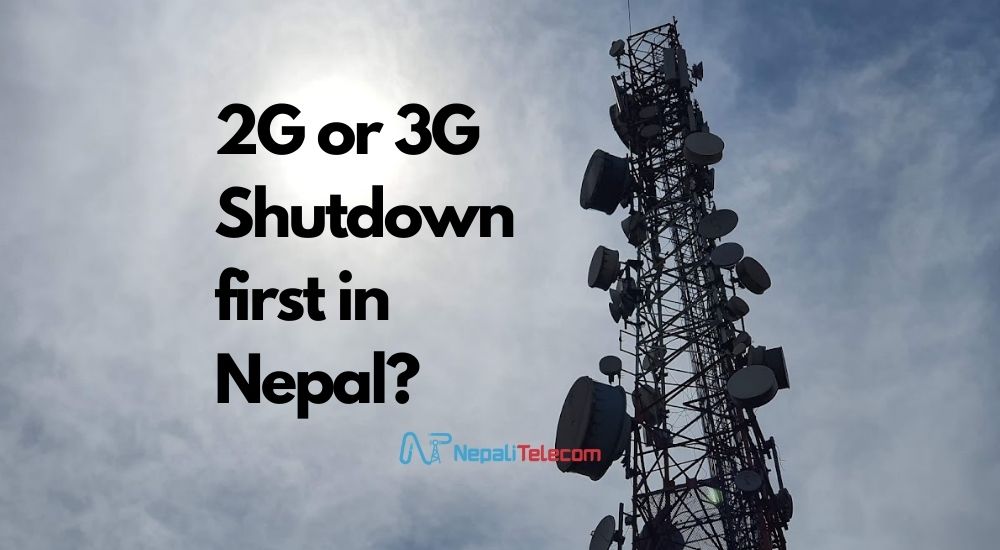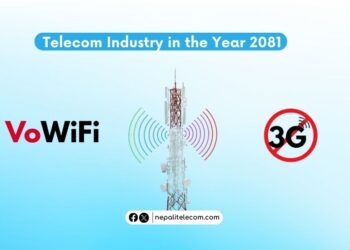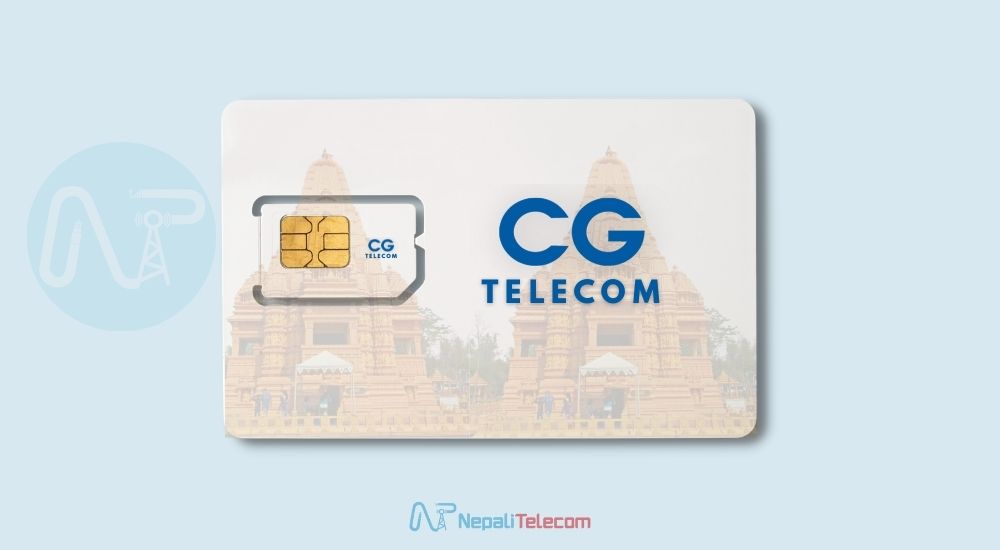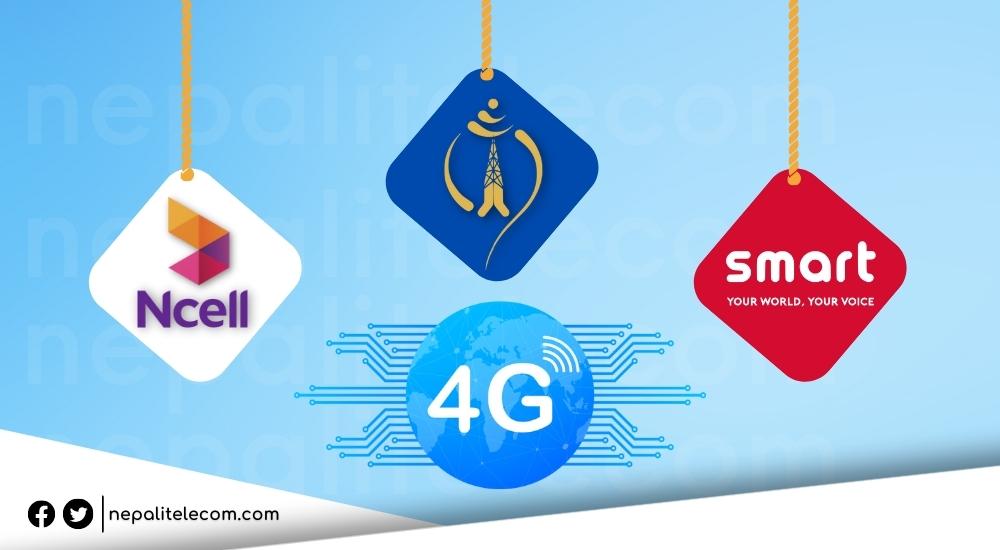Which mobile network will shut down first in Nepal, 2G or 3G? Find out the possibilities in our comprehensive review below.
As Nepal’s mobile communications incline more towards 4G and prepare for 5G, it leaves legacy networks in existential threat. Soon, we could see either 2G or 3G phased out. In this post, we will enumerate key reasons to decommission a network and also delve into which of the two 2G or 3G might have a chance to survive the scrap.
Talking about discontinuing mobile networks, various countries have acted upon it. Many US carrier networks have already shut down 2G and plan to end 3G by 2022. Europe, Africa, Asian nations have also set dates to gradually shut down either the mobile networks or both in the future.
The reason? They already have a widespread 4G coverage and 5G is about to break out. Therefore, it is likely that Nepal will also cast aside one of the 2G and 3G in the coming years.
Do read: Vietnam Bans 2G and 3G Phones: Could This Follow In Nepal Too?
Mobile Networks in Nepal
In Nepal, major telecom companies NTC, Ncell, and Smart Cell are providing mobile voice calls and data services. NTA, the regulatory body has allocated 2G, 3G, and 4G licenses to the telcos for calls and broadband services. As for 5G, only Ntc trialed 5G but is not active at the moment.
In terms of mobile networks, NTC and Ncell offer all three mobile communications via 2G, 3G, and 4G so far. Smart Cell though strategically provides only 2G for voice calls and 4G for high-speed mobile broadband.
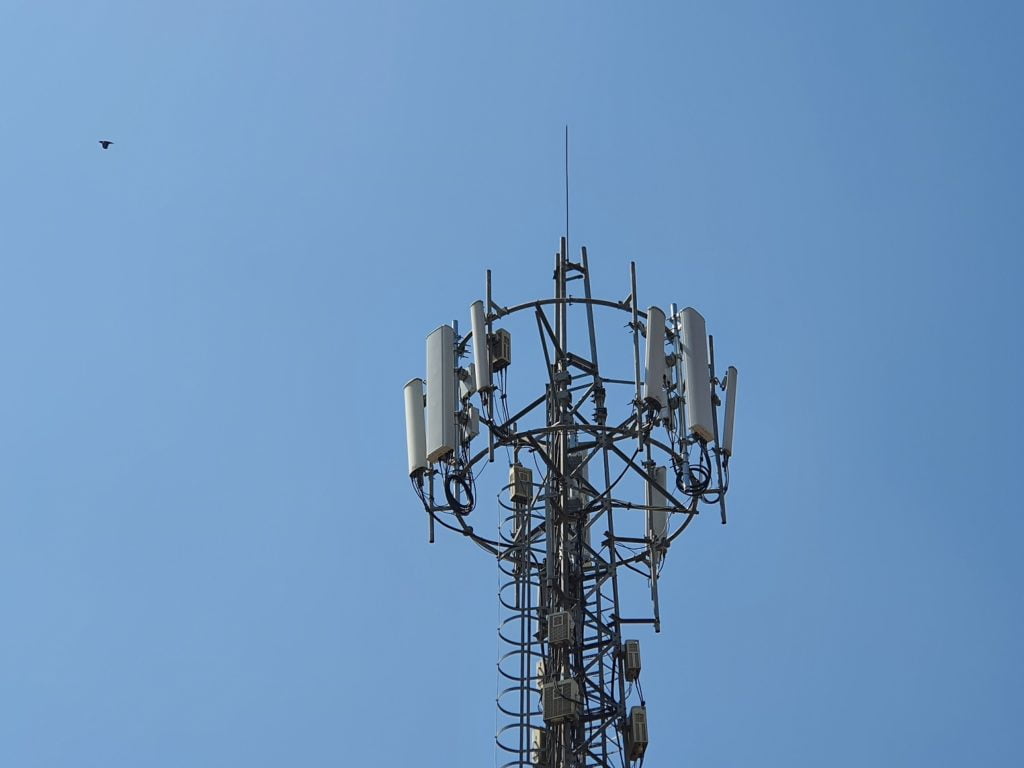
Multiple telcos and networks with their band frequencies have already crowded the radiowaves. With the 5G network in waiting, mobile communications could become way more complex. In all this, there is a high possibility that NTA could decommission either 2G or 3G in the near future. Below we have listed key reasons why this could be happening soon.
Don’t miss: 2G, 3G, 4G, and 5G explained in simple terms
Reasons to Pull Either 2G or 3G in Nepal
- To minimize expenses:
Maintaining 2G, 3G, 4G, and the upcoming 5G would be hard on the finances for the telcos. The equipment wears out, they need replacements, security features have to upgrade. All this put a heavy financial strain on the telcos. Additionally, the geographical condition of Nepal is also not favorable to look over multiple towers and keep a regular check on them, especially in the Northern region, with mountainous arduous terrain.
- To free up spectrum:
NTA has allocated necessary spectrum band frequencies to telcos for operating legacy and 4G networks. The upcoming 5G network spectrum will crowd it further. Taking one network down will free up the band frequencies for NTA and could be utilized for newer, efficient technologies. This will also relieve telcos from paying for those frequencies.
- Relevancy:
2G nowadays is used for only voice calls as its internet doesn’t meet modern bandwidth demands. Meanwhile, 3G has a higher broadband potential and is the first to enable video calls. It offers higher-quality voice calls too. But with VoLTE’s arrival, both 2G and 3G have suffered relevancy. Check out: Top Features of VoLTE service
- The less, the better:
Smart Telecom has excellently executed this strategy of having fewer technologies. It employs a 2G network for voice calls and 4G for mobile broadband. While doing so, it doesn’t have to bother with the middle ground (3G). This has enabled the private telco to deliver very reliable and consistent mobile communication in its coverage area. This is a suitable reference to NTA and telcos that having fewer networks can be put to one’s maximum efficiency.
Now, it leads us to the obvious curiosity; which network will be pushed out first, 2G or 3G? The resolution will depend on the countries, governments, and their priorities. However, 2G seems to have more merits over 3G for multiple factors. We have compiled some factors that give 2G upper hands over its successor, 3G below.
2G Still Significant Than 3G
- 2G still wins for coverage for its all-encompassing penetration across Nepal. 2G has wider penetration and remains a default network in many remote regions. Besides, in cities too, it offers more consistent coverage than 3G or 4G. Furthermore, there are still areas in Nepal that have only 2G networks.
- This results in 2G being a more preferred network for voice calls and with VoLTE arriving, 3G will lose more grounds for both voice calls and mobile broadband.
- 2G networks can fit into lower bandwidth and also on smaller bandwidth which is not possible with 3G. In addition, 2G cell towers can offer wider coverage. Meanwhile, 3G can’t as it operates at a higher frequency band like 2100MHz. This influences the telcos financial expenditures as they need more cell towers to expand the 3G network.
- There is another issue with 3G. Users can expect their smartphone battery to drain faster on 3G while it lasts slightly more on a 2G network. This can be worse in areas with fluctuating signals.
- For voice-only users, 2G networks serve it well than 3G in Nepal while 4G outweighs 3G in terms of better speed and reliability. This will definitely put much pressure on the telcos to give it a shot at 3G. Find why 4G is better than 3G, with complete comparison.
4G’s Steep Growth
Currently, NTC and Ncell each have above 50 lakh 4G users as per NTA’s latest MIS figures. On 3G, NTC has over 1 crore users, and Ncell boasts almost 25 lakh subscribers. Plausibly, NTC’s 4G accumulated above 39 lakh new 4G users in just a year in 2078. Smart Cell has 1 lakh, 82 thousand, 615 users on its fourth-gen network. This all amounts to a total beyond 1 crore, 10 lakhs 4G users in Nepal.
This is a testament to accelerating coverage for the fourth-gen network in the country. A recent report has shown that Ntc 4G coverage has reached 92% local levels in Nepal with nationwide coverage expected soon. Meanwhile, there remain some areas with only 2G networks.
These factors compromise the status of 3G. It has lost priority and ground over its predecessor and successor. With 4G-based VoLTE offering simultaneous HD voice calls and very high bandwidth performance, 3G will be the one to lose the essence.
Current updates on mobile network shut down
Ntc will shut down 2G on 1800 MHz band. The closer will complete by 2025. Ncell will switch off 3G by the end of 2025. Both companies seek to refarm resources for 4G and later 5G. The move also allows them to focus on newer standards and save cash on repair and maintenance on older technologies.
Ntc has also phased out CDMA that was offering 2G and 3G services. The company is encouraging existing CDMA users to shift to a GSM-based network with exciting offers. In other news, NTC also shut down WiMAX and handed over the spectrum back to NTA.
So, it seems that both 2G and 3G networks will sunset in Nepal at around the same time. But while Ntc will keep 2G on 900 MHz band alive, Ncell will also leave it operational for voice service in rural and remote areas. But the truth is, both networks are likely to go offline in the next few years.
Our Conclusion
We assume that Smart Cell like strategy could be best for Nepal benefiting both the telcos and the customers. Due to nationwide coverage and reliable voice calls, 2G remains the default choice for many including featured phone users. 4G is nearing complete coverage and with VoLTE, better voice calls and higher speed data are guaranteed.
Check out: Why do 2G, 3G, 4G networks coexist?
These factors highlight that 2G outweighs 3G for both reliability, and pragmatism. This is why we believe, the combination of 2G and 4G should be ideal for all parties.
Summing up, it should be 3G and not 2G should be afforded a farewell if Nepali authorities decide to let go of either of a network. Tell us your opinion in the comment box below or our social media discussion post.


